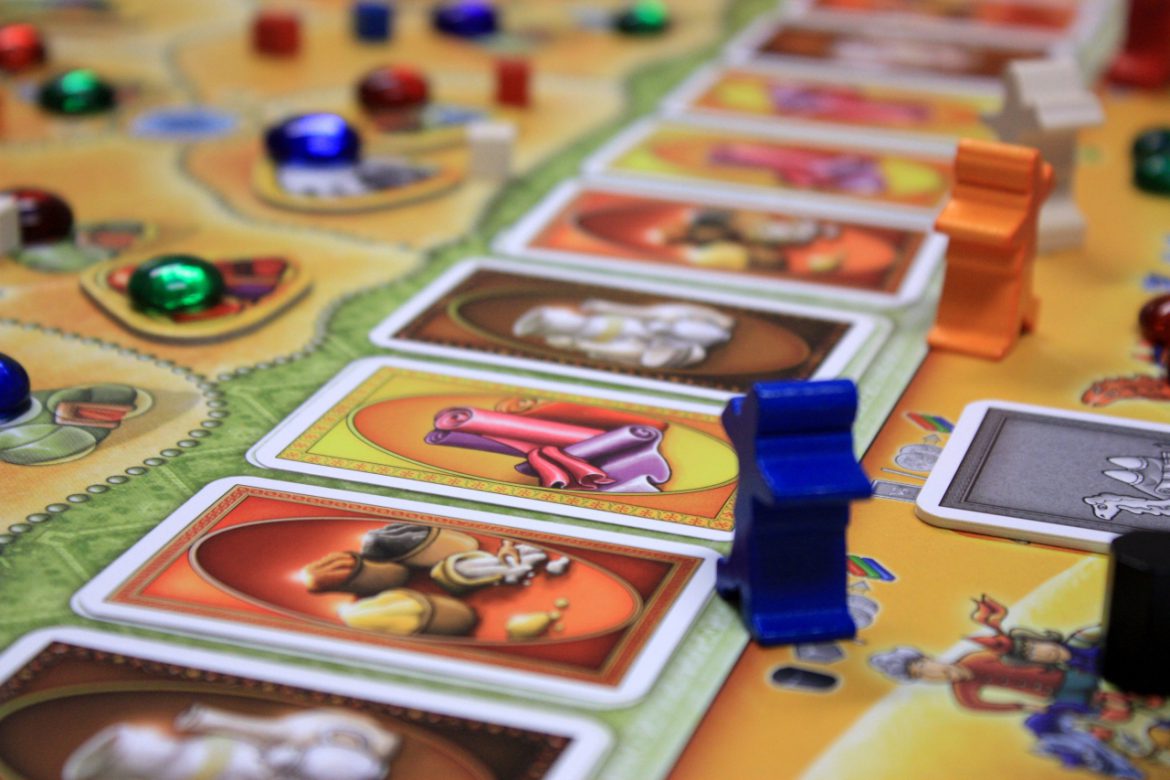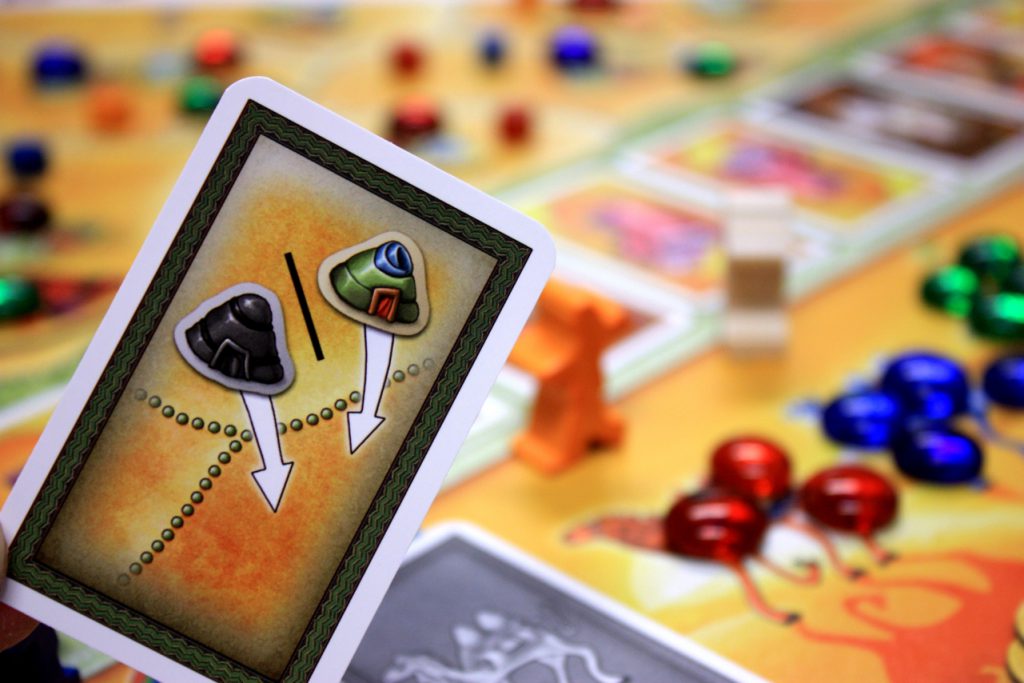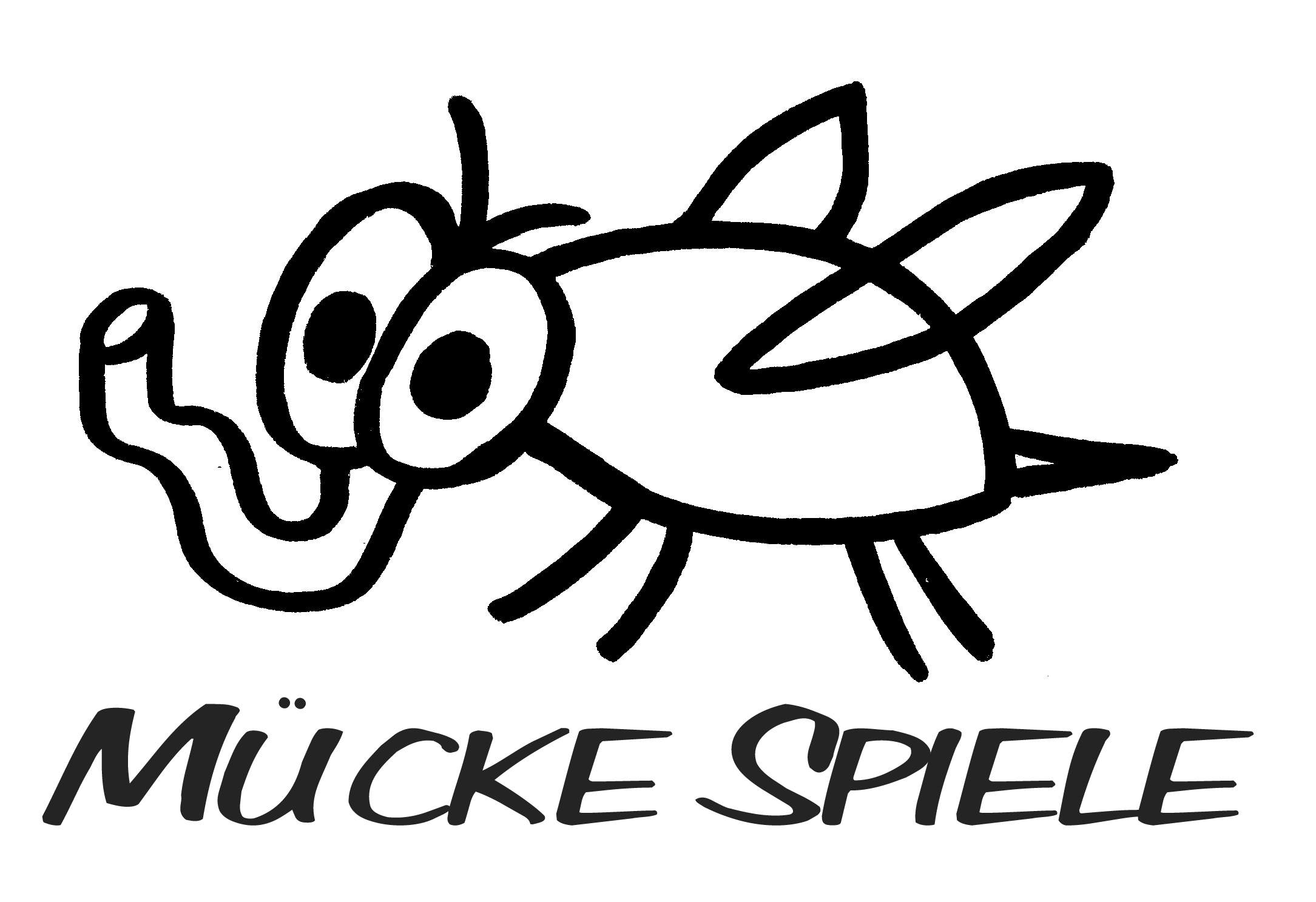On the blog of Spielbar the author Peer Sylvester describes the development story of Taschkent:
Taschkent was created at Mückespiele as part of the game author competition 2009/2010. It was about creating a game from certain game material. Which was Interesting, but for me of little help, because the game material is so universally applicable, that there was no idea to insire me. That changed when I saw a picture in a vacation home of a friend that showed a scene in Central Asia. Immediately I noticed that the picture was similar to a game board! An acquaintance of mine made a copy of the picture for me and I decided to make a game out of the picture and material – sometimes a template (and thus a restriction) is very useful to channel creativity.
The following ideas were included:
I’ve always wanted to make a game about the Silk Road. And with this game plan, this was a possibility. With a bit of subject research I came to Tashkent – at that time the place where goods were brought from the Silk Road mainly to Russia. The part with the Russian furs, however, fell away in the design process.
- The game board is divided into two parts, you need to act in both the upper part and in the lower one. At the top you build trading posts and trade with the huts. At the bottom goods are acquired, and you fill up your supply of stones and such things. That some of the elements of the caravan in the picture had the same color, as the goods from the competition, was a lucky coincidence.
- The camels below stand for actions, and you move your figure back and forth. Actions become more expensive when other people are standing there, too. The same applies in principle to the placement of objects in the upper part, however, it was quite clear that each object needed its own price, otherwise the tactics would be obvious.
- Of course (because of the theme) things should be sold and there should be some kind of “demand determines the price”. So you sell to the huts (the areas there are thus not equally valuable) and get money depending on how many huts do not have the corresponding goods yet. Because I wanted to allow clever moves, so besides the intuitive “build trading posts where the most huts are” there are also some more indirect ways: by means of trade connections, goods are moved to neighboring areas (the arrangement of the areas is important on the plan) and huts (both own and neutral). This also increases the dynamic of the game, because without new huts it becomes too static. Dynamics and many ways to get to the goal make in my eyes a good multiplayer game.
- I always like two things about games: when you have to think about how much profit to use for victory (“Die Händler” is the best example), and the other if there is a condition, by which you lose the game. In this case, the players have to decide whether they want to invest the sales proceeds in trading cards (which only count at the end) or whether they want the proceeds to be paid out. Without money you do not get far, so the dilemma is actually a big one. And in order to keep a dilemma even in the last round, the players who have the least amount of cash at the end of the game will lose. The latter mechanism was well received in our rounds, but a test player did not like it at all. I took the opportunity to start a small survey. Since the players have influence on their cash, the core requirement was fulfilled and the rule remained in the game (people who do not like it can use the rule for the two-player variant).
- The die should have a meaning for all. So I came up with the idea of splitting the rounds into two phases: an action phase and a trade phase. In the first phase, the players do their actions, so taking trade goods, placing trading items, etc. In the second, they can then sell goods. The length of the action phase depends on the dice roll. So the players have to decide what actions to do and which they can hope for. I do not want to describe the problems and changes of the rules in detail here – that would be tedious. Ultimately, the game was good enough to land far ahead in the competition and Harald Mücke asked me if he could publish it. I said to myself and to my delight, he hired Klemens Franz as an artist, whose style I greatly appreciate (and I am not just saying this now). He managed to adopt the style of the original, but to convert the format into a square plan and, above all, to make everything clearer. A good overview in this game is quite important, because many of the possibilities are not always obvious (the above mentioned trade connections are often underestimated, for example) and you should be able to quickly see which action belongs to which caravan field. Harald also wanted a two-person variant. Since I hardly play in pairs, this was a special challenge, especially in such a dynamic game, in which too little would happen with the basic rules. So there had to be a dummy player. This is somewhat automated (I had Da Vinci in my mind), but not 100% calculable – just like a fellow player. The rules worked well. Oh and of course, the “poorest player loses” rule is significantly mitigated.


